Make your own hummus the easy way, with pantry staples! This delicious, high protein recipe is a perfect vegan and gluten-free addition to so many meals and snacks. Inspired by my travels and the Yotam Ottolenghi "Jerusalem: A Cookbook." Dried & canned chickpea options included as well!
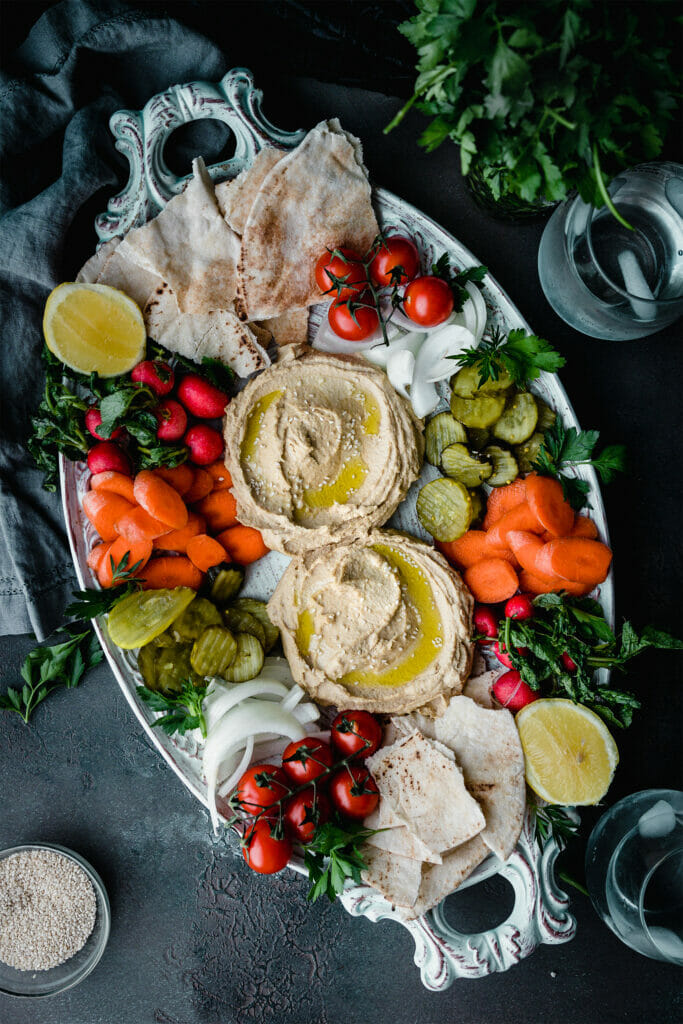
Note: I recognize that hummus is something with many cross-cultural influences and styles. I am definitely not an expert in it and know that Middle East relations can be fraught when selecting the "true" form of any recipe. The below is simply one take I enjoy.
After visiting Tel Aviv, I understood how much hummus could enhance any kind of diet. With endless topping variations and blends, it really can become a meal on its own. You would think that after eating hummus at least once a day, I would have gotten sick of it! I was lucky enough to visit Abu Hassan, which is said to have the best hummus in the world. After the long hike to get to the unassuming storefront, I definitely agree with that designation.
Nowadays I rarely make my own hummus. There are so many varieties available at the store these days, and it's something I have trouble justifying an entirely dirty food processor. That being said, every time I do make it I am never disappointed. And this variation is why.
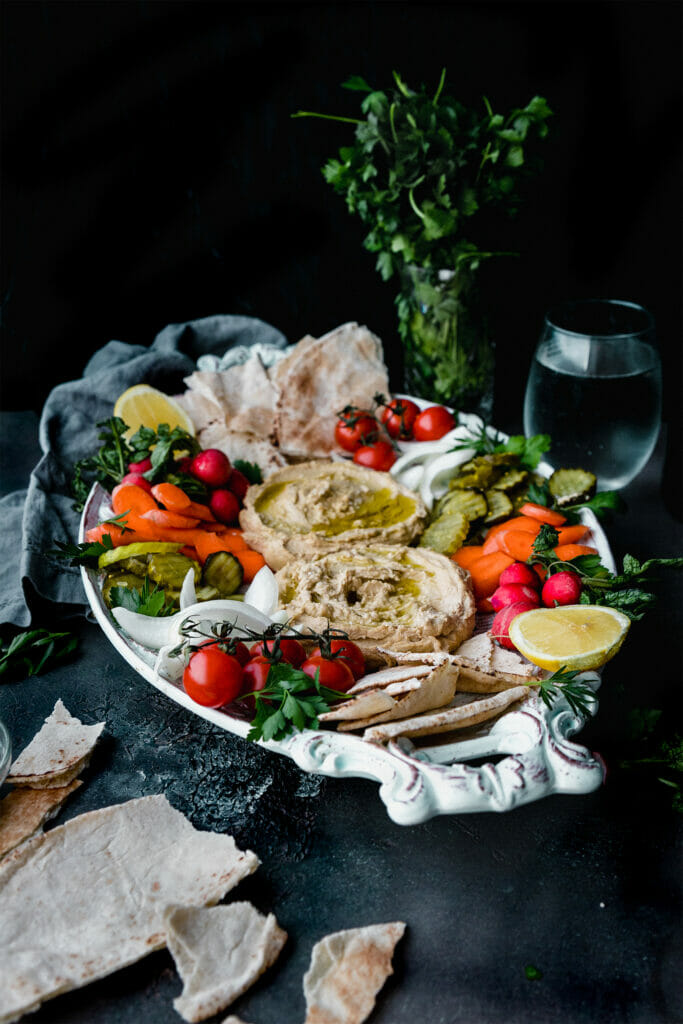
How to Make Authentic Hummus with Dried Chickpeas
Hummus is a perfect snack for any time of day with a great mix of protein, fiber, and healthy fats to keep you full. This particular recipe method is adapted from "Jerusalem: A Cookbook." Yotam Ottolenghi is very well known these days for a variety of cookbooks focusing on Middle Eastern cuisine (he is from Israel). I love his fresh approach to food that really aims to celebrate inherent flavor and high quality ingredients. To make truly authentic hummus, he recommends cooking dried chickpeas. This is much easier than you may think, but it does take a bit of planning!
- You'll first begin by soaking the dried chickpeas overnight. They will about double in size.
- The next day, the chickpeas will need to cook on the stovetop for around 30 minutes. If you are using older beans, this will take longer.
- Finally, you will food process the now cooked chickpeas with runny tahini, lemon juice, garlic, ice water and salt.
How to Make Authentic Hummus with Canned Chickpeas (the Ottolenghi way)
Canned chickpeas make this a ten-minute recipe. While I do advocate for trying this recipe the full way through at least once, I promise that pre-cooked chickpeas will still produce delicious results.
Would you like to save this?
- First, you will drain and rinse your chickpeas
- Then it's time to blend! Giving your food processor at least five minutes to run will insure the most creamy results.
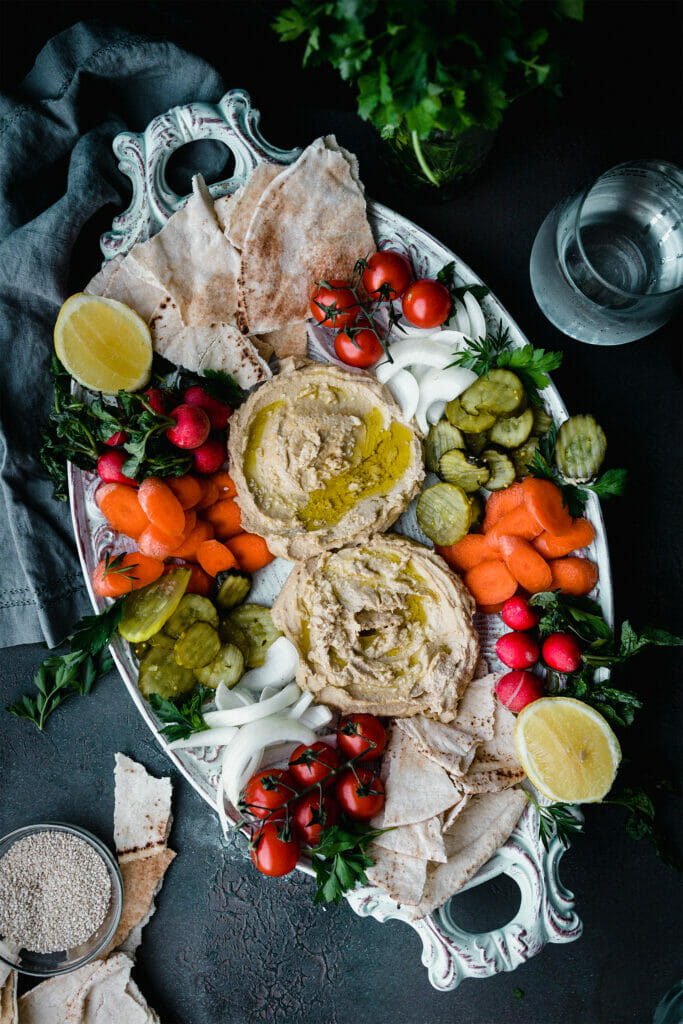
Tips for Making the Creamiest Hummus
- Use tahini that is as runny as possible. Brands like Mighty Sesame and Pepperwood Organics both work well, as the do not require stirring to emulsify.
- If you have extra time, remove the skins from the chickpeas before processing.
- Let the processor run for at least five minutes, scraping down the sides as necessary.
- Add ice water one tablespoon at a time, while the processor is running, to help ingredients incorporate.
What to Eat With Hummus
While carrots and pita are a classic combination, here are some more creative pairings that I've enjoyed in the past:
- Mild pickles (I don't like pickles but love this combination)
- Raw sweet onion wedges (really!)
- Lavash or pita bread
- Falafel bites
- Fresh vegetables like carrots, celery, radishes, and tomatoes
I hope you enjoy this authentic hummus recipe! If you're looking for more dips, be sure to try one of these next:
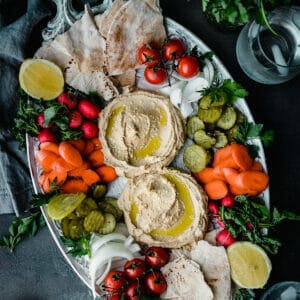
Authentic Hummus
Ingredients
- ¾ cup dry chickpeas Sub with 1 and ½ cups canned if not cooking from dry
- ½ teaspoon baking soda Omit if using canned beans
- 3 and ¼ cups water Omit if using canned beans
- ½ cup tahini Fresh, runny tahini is best
- 3 TBS freshly squeezed lemon juice
- 3 cloves garlic
- 3-6 TBS ice water Depending on how runny your tahini is
- Salt
- For serving: fresh pita lavash bread, carrots, celery, pickles, onion, olive oil drizzle
Instructions
Start here if using dried chickpeas
- The evening before you plan to have the hummus, soak the chickpeas in a large pot of water overnight. The water should be double the volume of the beans (they will expand a great deal as they absorb liquid).
- The next day, drain chick peas in a strainer. Add them to a medium pot over high heat. Add the baking soda and stir constantly for three minutes. They may foam slightly, and that's OK!Add water and bring to a boil. Cook for roughly 30 minutes, skimming the top of the mixture periodically for residue. Check garbanzos at the 20 minute mark. Total cooking time will depend on the freshness of your beans. When finished they will be very tender and delicate but not mushy. You should have around 3 cups. Continue to next step.
Start here if using canned chickpeas
- Drain the chickpeas. Blend the beans in a food processor for about a minute. While motor is running, add in all remaining ingredients. After water is added, let processor run for 5 minutes (this sounds long but trust me). This will yield the most pillowy and smooth hummus. Place hummus in the fridge and let rest for 30 minutes before serving. Once ready, let come to room temperature, drizzling with more tahini, olive oil, lemon juice, and fresh parsley.

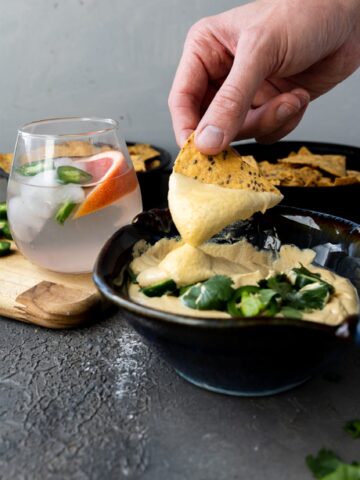
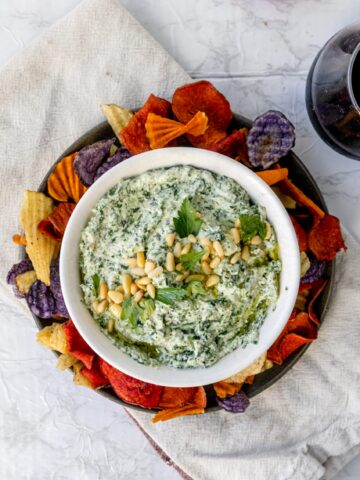
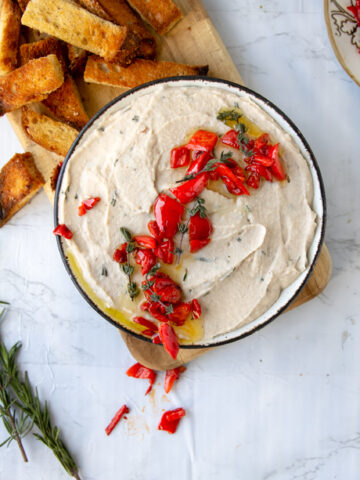
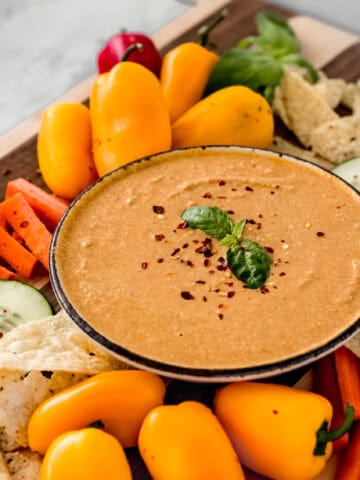
Nahed Squires says
I was looking for this quick recipe using canned chickpeas and am glad I found it. Thanks for sharing it.
I did notice that for the first ingredient you wrote “ 3/4 cup canned chickpeas (Sub with 1 and 1/2 cups canned if not cooking from dry)” and I believe you meant “3/4 cup dry chickpeas”. Readers probably get it anyway but it’s worth correcting! (I work with words so notice these things 😊)
Emily says
Ooops, thanks so much for letting me know and sorry for any confusion! Updated 🙂 I appreciate your comment!
Ki. says
The official title of this dish is "hummus bi tahina" حمص بطحينة . Hummous is Arabic for chickpeas or garbanzo, Tahina is Arabic for milled sesame seeds. It is the quintessential spread of arabic cuisine since the 13th century in Egypt and the rest of the Arab World. Enough said. Many thanks
Emily says
Hi, thank you for the information!
Eric M. says
Excellent!
Emily says
Thank you for trying it!!
Philip says
Nader why don’t you enjoy the recipe and spare us your propaganda. Half of Israelis come (were expelled from) Arab countries.
Nader says
Hummus isn't Israeli. Full stop. Whatever anyone thinks is Israeli hummus is Palestinian Hummus. The Jewish Population that lived in the holy land in peace with it Christian and Muslim brothers and sisters prior to the creation of Israel in 1948 were Palestinians. European converts to Judaism don't get to call this theirs. They've stolen the land. They ain't stealing the hummus.
Emily says
Hi Nader! I use the term "Israeli" because this recipe (as noted) is from the cookbook "Jerusalem: A Cookbook" by Yotam Ottolengi, who is from Israel and identifies this way. Sami Tamimi is a Palestinian chef who contributed this book. Hummus has a long and rich cultural history, of which I am not an expert. I am not an authority figure on this cuisine and do not intend to be perceived as such. I simply wanted to share a recipe I really enjoyed. Thank you for bringing up this issue.
horolodge says
This looks amazing! I'll have to give it a try.